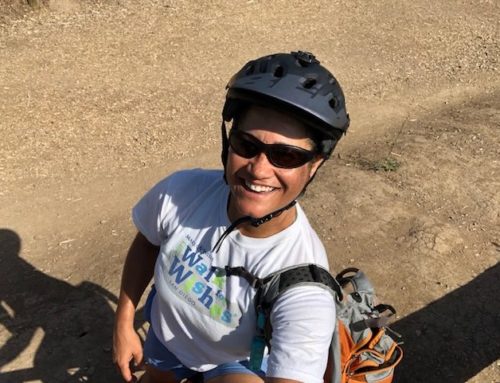Many people who weight train are primarily concerned with the front half of their body because it proves most visible, and in the process the backside gets left out. It’s important to think of the body as a whole and not to view any one area as any more important than another simply because of its physical location on the body. When body parts are trained disproportionately and muscle imbalance occurs, it can lead to injury. It’s particularly important to maintain balance between opposing muscle groups like the triceps and the biceps, the abs and low back, or the chest and back. That brings us to this edition’s subject: the back.
The back is made up of a combination of large and small muscles, the largest being the latissimus dorsi, followed by the trapezius muscles. In addition to these, smaller muscles like the teres major and minors, supraspinatus, infraspinatus, and the rhomboids collectively form the muscles of the back. Many exercises train more than one specific muscle, instead focusing on a muscular region. And once again, the back should be looked upon as a whole unit and trained accordingly.
Lat pull-downs represent one of the most common means of targeting the latissimus dorsi, or lats for short. This exercise requires a machine and as the name implies, the user pulls a weight down towards him/ herself. A bar that allows for a wide hand position usually works the best. The user will either sit or kneel on the floor, depending on the machine, and while keeping the elbows wide and out to the sides of the body, pulls the bar down until it reaches the upper chest. A common misconception is the belief that it is somehow beneficial to pull the bar behind the head rather than in front of the body. This actually has no added benefit and is dangerous to the user. I once heard of the pulley on a machine breaking, and the bar crashing down into the user’s neck, fracturing the cervical spine and resulting in paralysis. So keep the bar in front of your body, and exhale while pulling down. This proves not only the beneficial, but safe.
An alternative to the lat pull is the wide-gripped pull-up, sometimes called a chin-up. While usually difficult for beginners, you may require a spotter in order to pull up your own body weight and get your chin above the bar. If you can access a pull-up machine, this will allow you to perform the exercise and result in progressively building strength without a spotter. The machine uses a counter weight to offset your own body weight, allowing you to work through complete repetitions on your own. Like the lat pull, maintain a wide hand position, but exhale as you pull yourself up. Try it out—it works great!
The back row targets many of the smaller muscles and middle portion of the back, and can either be performed using a machine or free weights, For simplicity sake, I’m going to explain it with free weights. To begin, the user bends over at the waist with knees slightly bent. It is very important to maintain excellent form on this exercise, so the angle of the back should be less than 90 degrees, assuming that standing upright is zero degrees. With your back concaved slightly, pick up the barbell. With your arms fully extended, bend your elbows and draw the barbell in to your chest. Be sure to keep your arms in towards your sides rather than flare them out. Exhale as you bring the barbell towards you. Dumbbells can also be substituted in place of the barbell, and many variations exist, including single arm rows using a bench.
The trapezius muscles form a diamond like pattern on the upper back and neck, and the best way to train them and some of the other upper back muscles mentioned earlier, is with an upright pulling exercise called a shrug. Again, a cable machine or free weights work best. When using dumbbells, the user stands upright with arms at sides, and simply does a shrugging movement with the shoulders, elevating the scupula in the process. Be sure and perform this in a slow and controlled fashion, as you should all exercises. Lower the shoulders while inhaling rather than drop them back down into place to complete the motion.
The exercises outlined here will form a good foundation for future, more advanced variations. Just remember to practice good form and use progression in your workouts. Start off light and work your way up to heavier weights. Using these methods will allow for a dynamite workout! Be sure and tune into the next edition for the final segment of this series—the abs and low back!
Melissa Allen, BS, CPT, CES is a certified personal trainer, corrective exercise specialist and Medifast health coach, is the owner of the Optimum Condition Corrective Exercise & Performance Center, located in El Cajon, in the East County of San Diego. We specialize in customized fitness training and corrective exercise for both recreational athletes and post-rehab clients, as well as guaranteed weight loss programs or your money back. You can schedule a free consultation to help you get started. Please visit her website at OptimumCondition.org.





